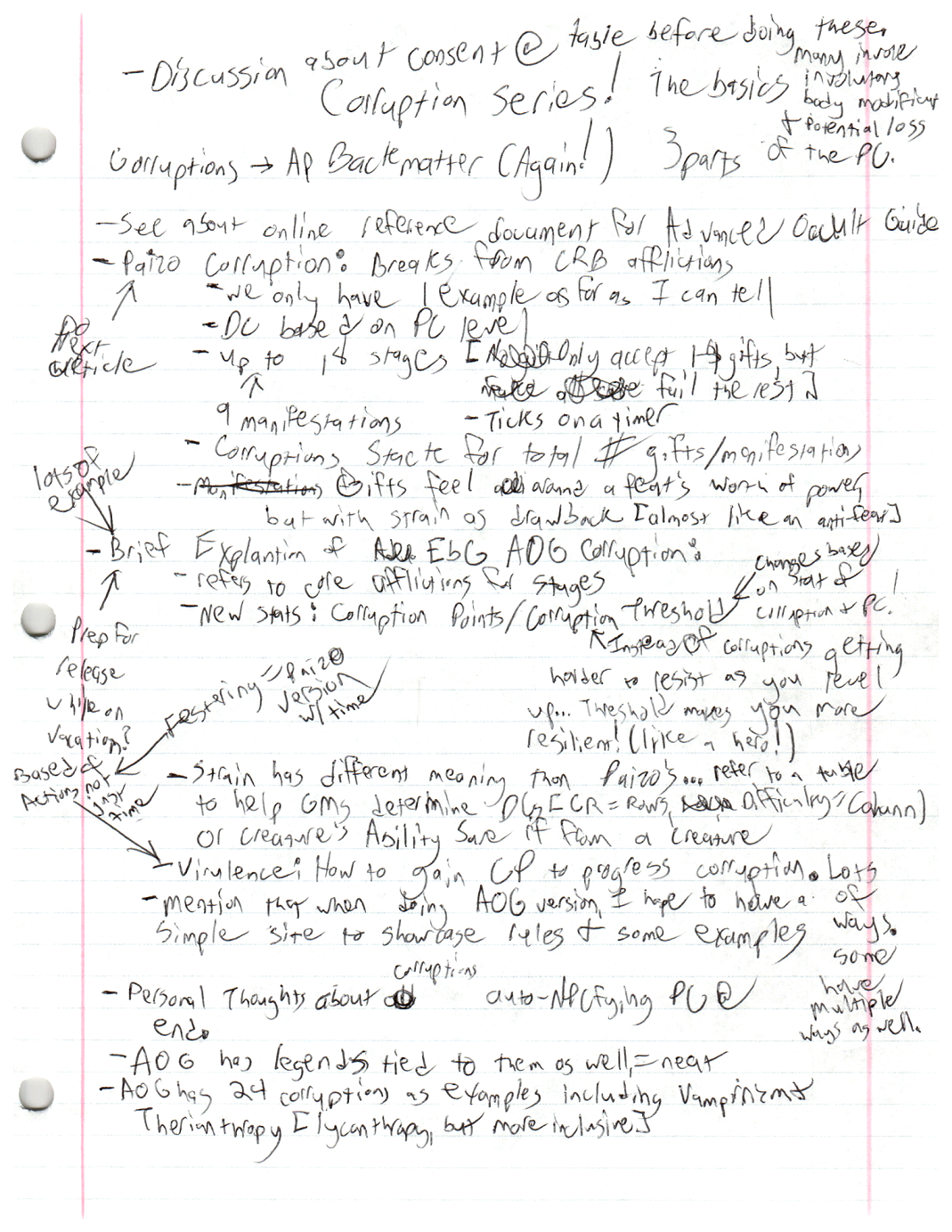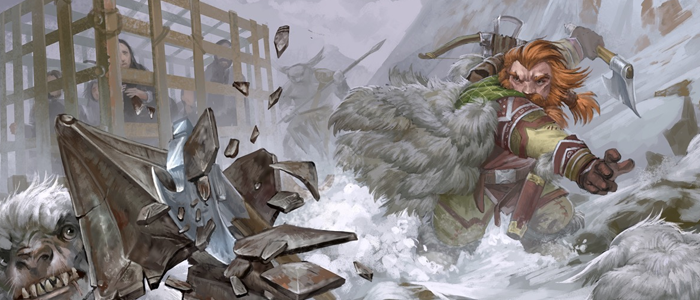I can be one of the first folks to admit that I would never get to experience the amazing panels at Paizo Con if it wasn’t for Know Direction’s amazing convention coverage. I was able to catch the Keynote address and that was it for the weekend! I’m looking forward to listening to them in my ever-expanding podcast playlist.
After finishing the Organization project, I think I’ve waited long enough to delve into some content that Paizo and a 3rd Party Publisher have covered. I’m going to delve into the world of corruptions! I’ll be starting the dive by giving a brief over of Paizo’s and Everbody Games’ versions of corruptions. My next two articles are going to be creating the same corruption in the two different systems.
Consent at the Table
Before I go any further in working on corruption rules, I want to make clear that these typically involve psychological horror and/or body horror. I’m not going to go into deep detail about consent at the tabletop. Mostly because there are some great resources below that cover the topic:
- Horror Campaigns (Starfinder #10: The Diaspora Strain pg. 49)
- Horror Games & Consent (PF1 Horror Adventures pg.190)
- Monte Cook Games Consent in Gaming (free PDF)
- Know Direction’s Dear DovahQueen – Tabletop Consent
- Know Direction’s Investing In: Session 0
- Know Direction’s Investing In: Dread
Paizo Corruption Basics
We have yet another example of an Adventure Path introducing some great material into Starfinder. Signal of Scream’s first installment The Diaspora Strain, provides the full rules for their corruptions. While the backmatter lists some of the more common corruptions in the Pact Worlds setting, they only go into detail with a single corruption. I haven’t read The Diaspora Strain, beyond the backmatter, but just in case, I’d like to give a spoiler warning for the one corruption that gets fully detailed here. Let’s dive into a few of my thoughts on the corruption rules that Paizo has presented us:
- It breaks away from the already established affliction basics presents in the Starfinder Core Rulebook.
- The DC is automatically adjusted by the player’s level.
- This means that regardless of the source a corruption will always be the same difficulty for victims.
- Classes with poor Will Saves or poor Fortitude saves are going to struggle more with corruption at higher levels than lower levels by merit of the 3.X OGL Save Progression math.
- There is a potential for 18 stages in a corruption.

- All corruptions tick on a timer
- Corruptions will stack when determining the total number of gifts and manifestations a PC has to determine when a character “turns”
- Most gifts feel about as powerful as a feat.
- The penalties given by strains feel like the inverse of what feat bonus.
- Only a single fleshed out example
- A multitude of choices in manifestations
Everybody Games Corruption Basics
I’m excited to dive into some of Everybody Games’ content. The hitch in this right now is that I cannot find an online resource to link the rules to you all. My plan right now is to start a small website that will host the OGL allowed rules presented in Everbody Games’ Advanced Occult Guide regarding corruptions. I’m not going to make any promises on the supposed site’s quality, or if it will contain more than the Corruption rules, but time will tell! Here are some of the “high level” basics of the rules:
- Glossary of words “new” to the ruleset (I’m only going to paraphrase what they definitions are here)
- Corruption – An afflictions warping a victims
- Corruption Points – The statistic that grows as a victim fails saving throws. When it reaches the character’s Corruption Threshold, a victim advances to the next progression stage
- Corruption Threshold – This is based on the relevant ability score of the corruptions plus 1 per 3 levels/CR for a victim
- This ultimately means that higher-level characters have a chance to better resist corruption longer than a lower-level character.
- Strain – Determines how difficult a corruption is to resist
- Watch out here, it uses the same word that Paizo does in their corruption rules, but it is used differently
- Virulence – Actions that can cause a victim to accrue Corruption Points
- We get a sidebar that lists the progression track and a generalized version of what each stage might entail for corruption.
- 1 manifestation per stage
- Strain has a table presented to GMs with a range of Save DCs based on average party level and the difficulty they are looking to present
- Virulence has a lot of different ways to increase Corruption Points, not just based on time.
- Corruption Point gain can also be variable with dice rolls as well
- Neat legends to tie corruptions in a setting or campaign and to help a GM integrate them into a story
- 24 fully fleshed out corruptions to use as examples
- Including vampirism & therianthropy (a more inclusive term for lycanthropy, since lycanthropy only refers to wolves)
Conclusion
I tried my best to leave positive or negative commentary on the two different methods, except for how each system handles resisting corruption.
I’ve got a couple of good candidates that I might try to draw corruption from for my design. Terraforming planets have got to release some crazy stuff out into the cosmos. On the other hand strange star metals that can help enhance hemotheurgy could have some nasty side effects if used in the wrong manner. I haven’t landed on which one I’ll do for both versions of the rules. See you, next week readers!





